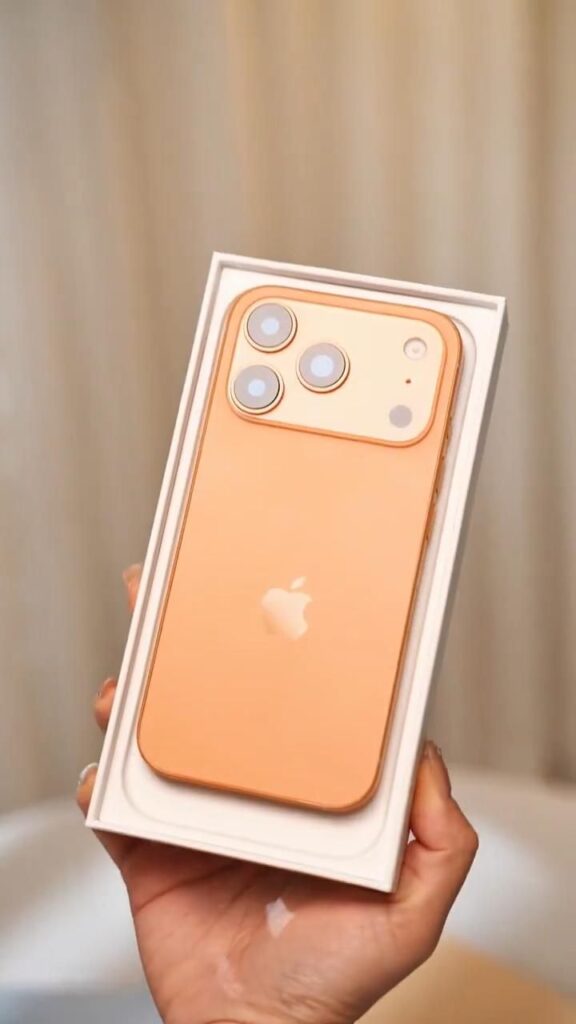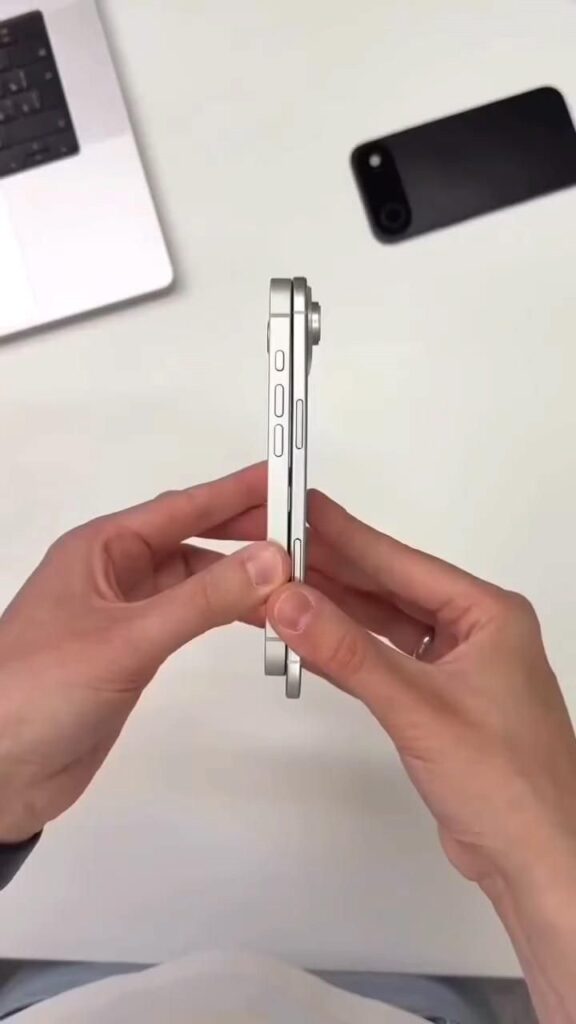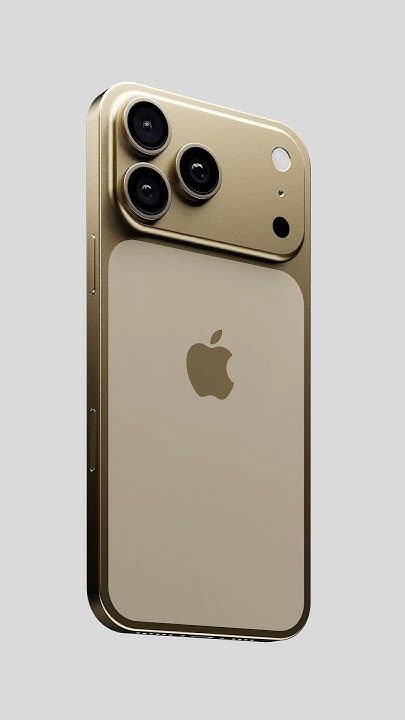I. Introduction
The tech world held its breath on September 9, 2025, as Apple took the stage for its most anticipated launch event of the year. The unveiling of the iPhone 17 series—comprising the standard iPhone 17, the revolutionary iPhone Air, and the powerhouse iPhone 17 Pro and Pro Max—promised a new era of mobile technology. The buzz centered on a radical shift towards slimmer profiles, significantly enhanced camera systems, and the foundational hardware for Apple’s next-generation AI. However, the event concluded not with unanimous applause, but with a simmering debate over design choices and the perceived stagnation of innovation. While the series undoubtedly offers refined performance and cutting-edge features, its controversial aesthetic decisions suggest Apple may be trading its legendary “Midas touch” for a strategy of safe, incremental evolution.
II. iPhone 17: The Accessible Everyday Powerhouse
Positioned as the cornerstone of the lineup, the iPhone 17 refines the formula without reinventing it. It features a slimmer aluminum frame housing a larger 6.3-inch Super Retina XDR display with ProMotion technology, ensuring buttery-smooth 120Hz scrolling and an Always-On feature. With a peak brightness of 2,000 nits, outdoor visibility sees a notable improvement.

Under the hood, the A18 chip paired with 8GB of RAM delivers robust performance, efficiently handling everything from intensive multitasking to the new on-device Apple Intelligence features, including a more contextual and integrated Siri. The camera system sees a meaningful upgrade with a 48MP Dual Fusion setup, leveraging computational photography for superior low-light portraits and video capabilities up to 4K at 120fps. Starting at $799, it offers all-day battery life and seamless integration with iOS 19, making it a compelling, no-compromise option for the majority of users.
III. iPhone Air: The Ultra-Thin Disruptor
The true headliner of the event was the iPhone Air, a device that redefines portability. At a jaw-dropping 5.8mm thickness and a mere 125g, it is the thinnest and lightest iPhone ever created. Its design, featuring titanium edges and a seamless glass back in colors like Slate and Sky Blue, is a marvel of engineering. However, this pursuit of minimalism raises immediate questions about durability, with analysts already drawing parallels to past structural concerns like “Bendgate.”
The 6.1-inch edge-to-edge OLED display is the brightest on any iPhone at 3,000 nits, and it achieves a truly notch-less look thanks to an under-display Face ID system. Performance is driven by a variant of the A18 chip, optimized for efficiency rather than raw power. The camera, a dual 48MP system, is constrained by the form factor, omitting a telephoto lens. The 3,200mAh battery targets 18 hours of use, a figure that underscores the inherent trade-off between its revolutionary design and all-day endurance. At $699, it’s a bold bet on style over substance, aimed squarely at minimalists and fashion-forward consumers.
IV. iPhone 17 Pro: Pro-Level Refinements for Creators
The iPhone 17 Pro is where Apple’s most controversial design choice emerges: a prominent horizontal camera bar that houses its advanced imaging system. While functional, the aesthetic has drawn sharp criticism for its departure from Apple’s signature minimalist elegance. Beyond the design, the Pro is a beast. It features a 6.3-inch LTPO OLED display with a nano-texture glass option for professionals who need glare reduction.
It is powered by the new A19 Pro chip with a 16-core Neural Engine, 12GB of RAM, and up to 2TB of storage, enabling pro-level AI tasks and generative editing entirely on-device. The camera system is a triple 48MP Fusion array, offering a 5x optical zoom and software equivalent to eight lenses, supporting professional formats like ProRAW and Log video. With USB-C 4.0 (Thunderbolt) and a customizable Action Button, it is unequivocally designed as the tool of choice for creators and videographers, starting at $999.
V. iPhone 17 Pro Max: The Flagship Behemoth
The iPhone 17 Pro Max shares all the DNA of the Pro model but amplifies it for the power user. It boasts the largest display in iPhone history—a massive, immersive 6.9-inch canvas with the thinnest bezels yet, perfect for gaming and media consumption. It houses the same A19 Pro chip but is coupled with a larger cooling system to sustain peak performance during prolonged tasks like 8K video recording or intensive ray-traced gaming.
Its key differentiator is battery life; a massive 4,600mAh cell promises up to 33 hours of video playback, effectively offering all-day-plus endurance for the heaviest of users. While its camera hardware is largely identical to the Pro model, it benefits from enhanced stabilization and a longer 10x optical zoom. As the undisputed flagship starting at $1,199, the Pro Max is for those who demand the absolute maximum screen real estate and performance from their device.
VI. Has Apple Lost Its Midas Touch? A Critical Look at Design and Innovation Shortfalls
The iPhone 17 series lays bare a growing tension within Apple’s design philosophy. The horizontal camera bar on the Pro models has been lambasted on social media and tech forums, with many users labeling it “jarring” and “un-Apple,” evoking comparisons to older Android designs they believe Apple once surpassed.

Furthermore, the upgrades, while steady, feel iterative. Brighter screens, better chips, and improved cameras are expected annual evolutions, not the revolutionary leaps that defined Apple’s past. The company’s focus appears to be on laying the AI groundwork, a strategic but unsexy endeavor that lacks the immediate “wow” factor of a foldable screen or a radically new form factor.
This creates a confusing form-versus-function divide. The iPhone Air’s ultra-thin obsession seemingly comes at the cost of battery and camera robustness, while the Pro Max’s “function over form” results in a large, heavy device with a divisive design. This fragmentation risks diluting the cohesive brand identity Apple is known for. Amidst fierce competition from foldables and AI-native Androids, Apple’s strategy of incrementalism, with unchanged starting prices, is being questioned. The backlash, from parodies of new color names to concerns over the Air’s structural integrity, signals a growing sentiment that Apple may be losing its creative edge, opting for safe bets over industry-defining innovation.
Comparative Overview: iPhone 17 Series
| Feature | iPhone 17 | iPhone Air | iPhone 17 Pro | iPhone 17 Pro Max |
| Display | 6.3″ Super Retina XDR OLED 120Hz ProMotion 2000 nits peak | 6.1″ Edge-to-Edge OLED 3000 nits peak Under-Display Face ID | 6.3″ LTPO OLED 120Hz ProMotion Nano-texture option | 6.9″ Super Retina XDR OLED 120Hz ProMotion Thinnest Bezels |
| Chip | A18 Chip | A18 Chip (Variant) | A19 Pro Chip | A19 Pro Chip (Enhanced Cooling) |
| RAM/Storage | 8GB RAM 128GB – 512GB | 8GB RAM 128GB – 512GB | 12GB RAM 256GB – 2TB | 12GB RAM 512GB – 2TB |
| Camera | Dual 48MP (Main, UW) 12MP Front | Dual 48MP (Main, UW) 12MP Front | Triple 48MP (Main, UW, 5x Tele) 18MP Front | Triple 48MP (Main, UW, 10x Tele) 18MP Front |
| Battery | All-Day (20h video) | Up to 18 hours mixed use | Up to 27h video | Up to 33h video |
| Design Highlight | Slimmer aluminum frame | 5.8mm thick, 125g Titanium edges | Horizontal Camera Bar Matte Finish | Largest iPhone Ever Titanium Frame |
| US Starting Price | $799 | $699 | $999 | $1,199 |
| India Starting Price | ₹79,900 | ₹69,900 | ₹1,09,900 | ₹1,29,900 |
| Best For | The Everyday User | The Style Minimalist | The Creative Pro | The Power User |
VII. Conclusion
The iPhone 17 series is a study in contrasts. It delivers exceptionally polished hardware that will satisfy the Apple ecosystem’s loyalists. The performance is top-tier, the displays are stunning, and the integration with iOS 19 is seamless. Yet, the controversial design language and lack of a true paradigm-shifting feature suggest a company operating with caution rather than conviction. The “Midas touch” that once turned every Apple product into an object of desire appears tarnished.

For consumers, the choice depends on priority: the iPhone Air for the style-conscious, the standard 17 for a balanced experience, and the Pro models for unbridled power. As pre-orders open for the September 19 launch, the question remains: is this incremental step a prelude to a 2026 redemption, perhaps with a foldable iPhone, or a sign of a new, less daring Apple era?






I was recommended this website by my cousin I am not sure whether this post is written by him as nobody else know such detailed about my difficulty You are wonderful Thanks